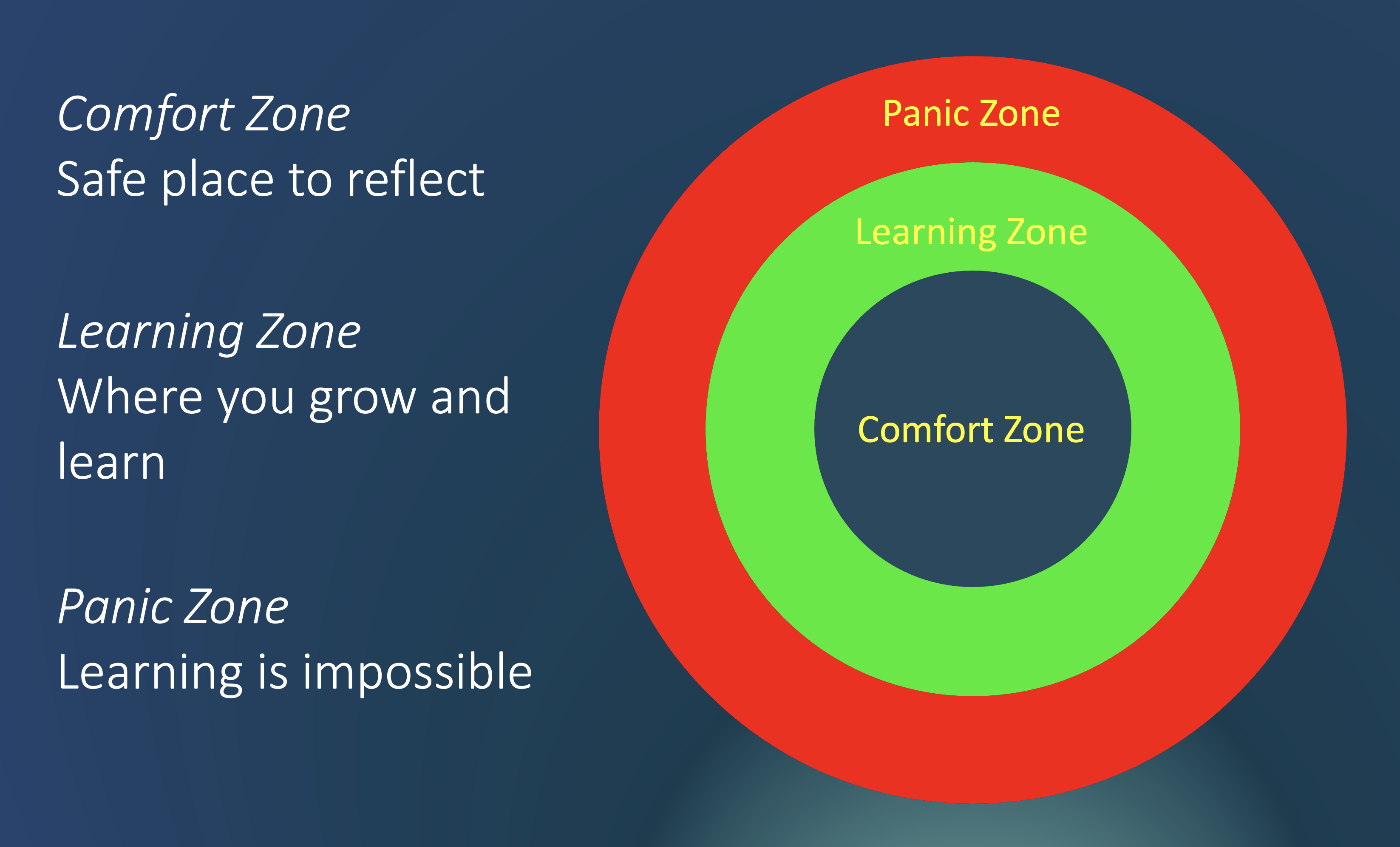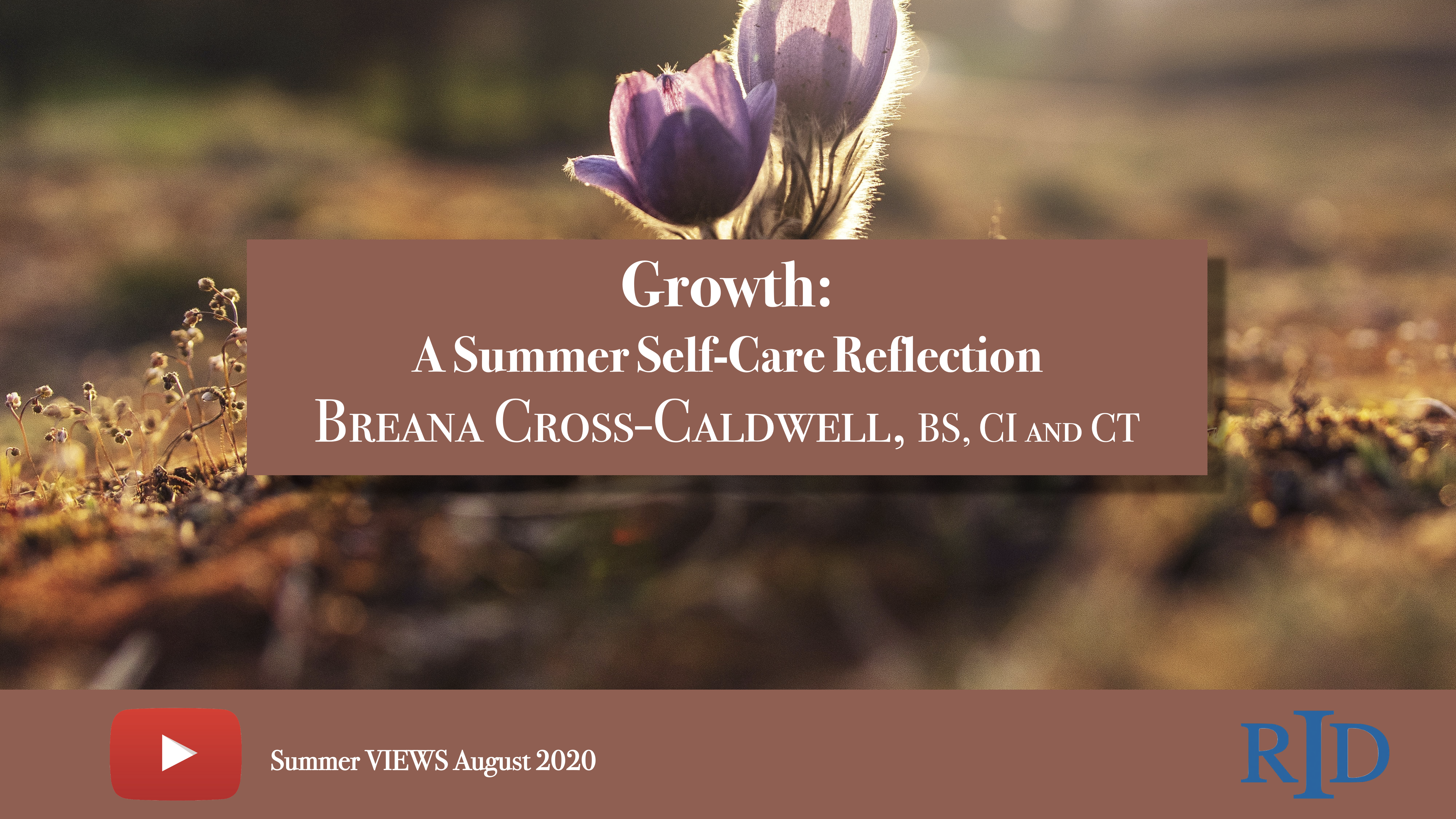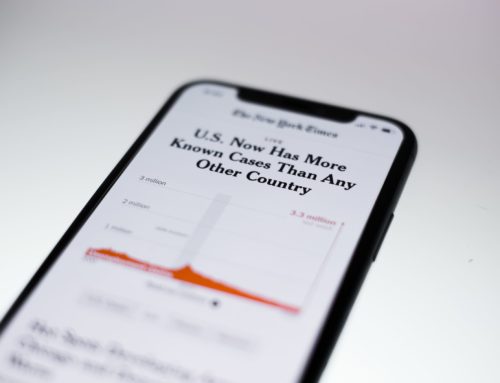Breana Cross-Caldwell, BS, CI and CT
Summer is the season of nature’s fullest expression of growth. As we move through this time of fullness, when all is blooming and the sun is at its peak in the midday sky, may we take a moment to reflect on all the ways we’ve grown, the support that has gotten us here, and take stock of what we need for the next phase of your growth cycle.
As interpreters, the first half of 2020 has brought many challenges, losses, deepened connections, lost connections, changes and much uncertainty. Life has pushed us to the edge, and then some. Becoming familiar with that “edge” and our reaction to it can bring us greater awareness and choice throughout our growth process.
Get To Know Your Growing Edge
The edge of our growth zone is, at its most simple form, a boundary (Senninger, 2000). Boundaries separate one space from another, often with the intention of protecting what’s inside. We feel safe within the walls of our boundaries because that space is known. Once we are pushed to the outer edges, we are faced with fears, uncertainties, and beliefs about who we are and the nature of the world. This triggers our emotions and creates discomfort…and comfort is something humans tend to gravitate toward instinctively. Once we know that our instinctive reaction is likely to avoid discomfort, we begin to have more choice in our response to it.
In the case of our growing edge, this discomfort is like a force field designed by our ego to keep us safe. We can think of the ego like The Wizard of Oz – a small and relatively impotent man hidden behind a curtain, projecting itself as a large and powerful illusion. In this classic movie, when the wizard is revealed and confronted he quivers with fear and insecurity, begging to redirect the onlookers’ attention back to the powerful image on the screen, desperate to maintain the illusion of power.
As we approach our own ego’s reactions with awareness, we can recognize our emotions as they intensify, and stay present with them in a more helpful way.
Being With, Rather Than Avoiding, Emotions
The key to standing at your growing edge, is developing the capacity to be with discomfort and emotion as it arises, instead of avoiding or pushing it away. We’ve explored many techniques for being with emotions in this self-care column – here is a list to spark your exploration:
Feel it, listen to it, dialogue with it, dance it, sing it, lament it, scream it, give it silence, write it, talk it through, cry it, laugh it, sleep it, sweat through it, create art with it.
Self-Care Reflection
Staying connected to ourselves through turbulence and the emotions it inspires is an ongoing practice. Here are some questions to consider as you reflect on this phase of your growth cycle. Explore your answers in a journal, vlog, conversation, or another supportive space.
-
How has the change and uncertainty of 2020 affected you? How have you felt it in your body, mind, and heart?
-
What losses have you experienced?
-
How might you acknowledge and honor all that you’ve felt and experienced this year?
-
In what ways have you stretched yourself and grown this year?
-
What are you proud of?
-
What has brought you joy or pleasure?
-
What resources, people, concepts, and practices have supported you during this time?
-
What does your intuition tell you about the next right step in your growth process?
-
What action will keep you in integrity?
Growth is Uncomfortable
Growth requires that we step out of our comfort zone and spend time with the discomfort of change, uncertainty, getting it wrong, and trying again. As you continue on your growth journey, remember that rest, comfort and care are an integral part of the cycle of growth. Look for opportunities to come back to your comfort zone, to rest and digest, so you may fully embrace and incorporate the important lessons you’re learning (Harvard, 2020).









Leave A Comment
You must be logged in to post a comment.